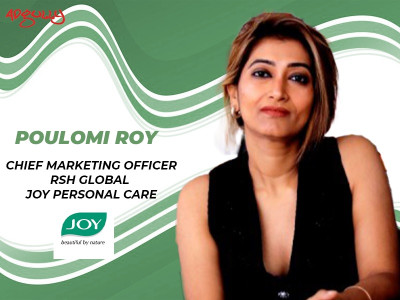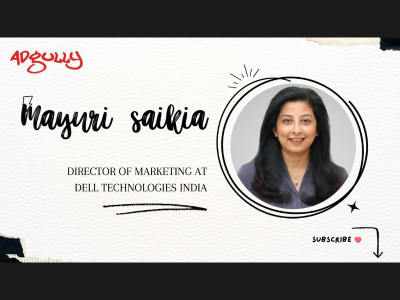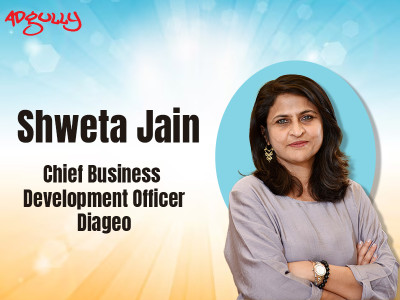We want make our communication more human and in touch with reality: Abbey Thomas
In the last 10 years, PR has taken a different dimension, especially after the entry of social media and the rapid shift to digital during the pandemic period. At the same time, the industry has been facing stiff challenges, moreover client expectations have also increased, with more emphasis being given to digital and online reputation management. The industry has undergone a radical shift and the current times have pushed the industry to change gears.
In PR Conversation this week, Abbey Thomas, Chief General Manager - Head Marketing & PR, Volkswagen Passenger Cars India, speaks at length about Volkswagen’s journey in India, adapting to the Indian market, crisis management, influencer marketing strategy, the importance of storytelling for the company, and more.
How has Volkswagen’s journey in India been so far? Could you give us an overview of Volkswagen’s latest campaign? What is the core idea behind it?
We want to take you through the entire journey that we have set from 2009, that is when we introduced the brand into India. It was very important for us to come into the country and also establish the brand, because the brand was not really well known in India. It took us at least two or three years to really establish the name and establish what we stand for. We had to communicate that in a very different way altogether, ensuring that we also created stories for people to understand better, and that’s one of the journeys that we began with. It was in the year 2020 that we introduced India 2.0 products, that is, products that were designed, defined and produced in India for Indians. Thus, we came out with two new cars – Tiguan and Virtus – which were engineered for India.
When we started on this journey, we also realised that there was a need for a new brand face, and that basically meant leading out and reaching out to a much younger audience in this country – probably one of the most important consumer segments in India, unlike elsewhere in the world. We have about 50% to 60% of the younger audience who are buying in and have aspirations to buy a car in India, and that’s how the journey of India 2.0 started in the year 2020.
After that particular phase, we also reached out to our network to make it much more vibrant. When we look at today and what we are trying to put together for you, it is about raising the bar on that particular communication in the last few years. Now, we want to reach out and make our communication much more human, much more in touch with reality, much more in touch with you and me in the market. How we look at products, how we look at services, how we look at using a car on a day-to-day basis – that is a way we have changed the communication. When we say you are in a Volkswagen, what we are selling is a strong belief in a product; we are telling our philosophy, we are selling our values. We are establishing our communication, letting people know what is important and what you need to buy in and what you should not ignore. These are things that we will be focusing on.
What channels and platforms have you prioritised for this campaign?
We are doing a 360-degree campaign, where we will be on digital, offline, print and television. We will also be promoting this outdoors, in smaller cities across the country. We will also be digitally very active on various platforms.
Crisis management has become a very important part of managing communications for an organisation. What strategies does Volkswagen have in place for crisis management and safeguarding the company’s reputation?
Today, warmth is extremely important. There is not one day in our working day at the office, wherein we do not go back to see what people feel and think about the brand. We address them outright. We have formats and processes in place that can really solve problems and get solutions in place. I think that is taken care of because we are very active in that space.
With the rise of social media influencers, how do you identify suitable partnerships that align with your brand values and resonate with your audience?
When we set out to get the influencers on board, we have a process to study what they have been involved with, how popular are they. So, these are normally the basic stuff that we keep an eye on, but most importantly, are they in the right space to speak about the brand at all? That is the most crucial aspect. If they are not in the right place, we would not connect with them. Our influencers are undefined from various segments and genres; it is not just celebrities who are from the space of movies or cinema. They are across areas, they could be small SMEs, they could be people who are starting something as start-ups, people who have a lot of say in various industries that they are operating in. That’s the kind of base we are looking for. We are not limiting ourselves to just the known faces.
What role does storytelling play in your PR and marketing initiatives? How do you ensure that your brand’s story resonates with the target audience?
Storytelling is a part of everything that we do on the communication side – be it PR or marketing. I think that is something that has been set into our DNA of really going out into thinking about what really happens. So, even if you look at local activities, we go for stories that are locally developed. For example, if I am in the south of India, maybe my India story that is centrally created may not really fit there. We also work with our dealers and partners to get out the best cases, the best stories that we can capture from those markets, probably to also use it on our platforms.



















Share
Facebook
YouTube
Tweet
Twitter
LinkedIn